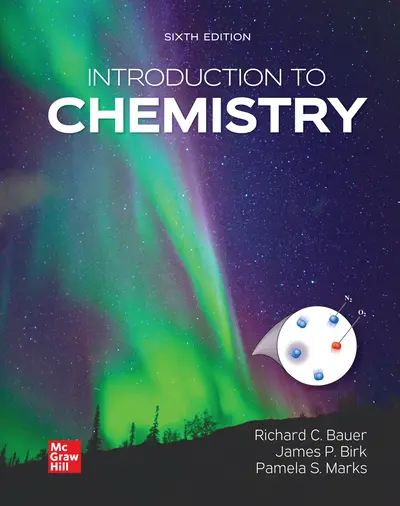My Account Details

ISBN10: 1266527982 | ISBN13: 9781266527982

* The estimated amount of time this product will be on the market is based on a number of factors, including faculty input to instructional design and the prior revision cycle and updates to academic research-which typically results in a revision cycle ranging from every two to four years for this product. Pricing subject to change at any time.
Instructor Information
Quick Actions (Only for Validated Instructor Accounts):
Introduction to Chemistry takes a conceptual approach to introductory chemistry. Chapters open with a scenario involving real-life students to connect abstract chemical concepts to students' lives. Math is introduced on a need-to-know basis. This conceptual approach first teaches chemistry and then shows students how to use math with the chemistry. We recognize how important it is for students to apply chemistry to their world, so applications - especially medical- and environment-related applications – are provided throughout the text, marginal notes, worked examples, and end-of-chapter problems.
Chapter 1: Matter and Energy
Chapter 2: Atoms, Ions, and the Periodic Table
Chapter 3: Chemical Compounds
Chapter 4: Chemical Composition
Chapter 5: Chemical Reactions and Equations
Chapter 6: Quantities in Chemical Reactions
Chapter 7: Electron Structure of the Atom
Chapter 8: Chemical Bonding
Chapter 9: The Gaseous State
Chapter 10: The Liquid and Solid States
Chapter 11: Solutions
Chapter 12: Reaction Rates and Chemical Equilibrium
Chapter 13: Acids and Bases
Chapter 14: Oxidation-Reduction Reactions
Chapter 15: Nuclear Chemistry
Chapter 16: Organic Chemistry
Chapter 17: Biochemistry
Appendix A: Useful Tables and Figures
Appendix B: Math Toolboxes
Appendix C: Answers to Consider This Questions and Practice Problems
Appendix D: Answers to Selected Questions and Problems
Appendix E: Reference Information
Glossary
Index
Need support? We're here to help - Get real-world support and resources every step of the way.